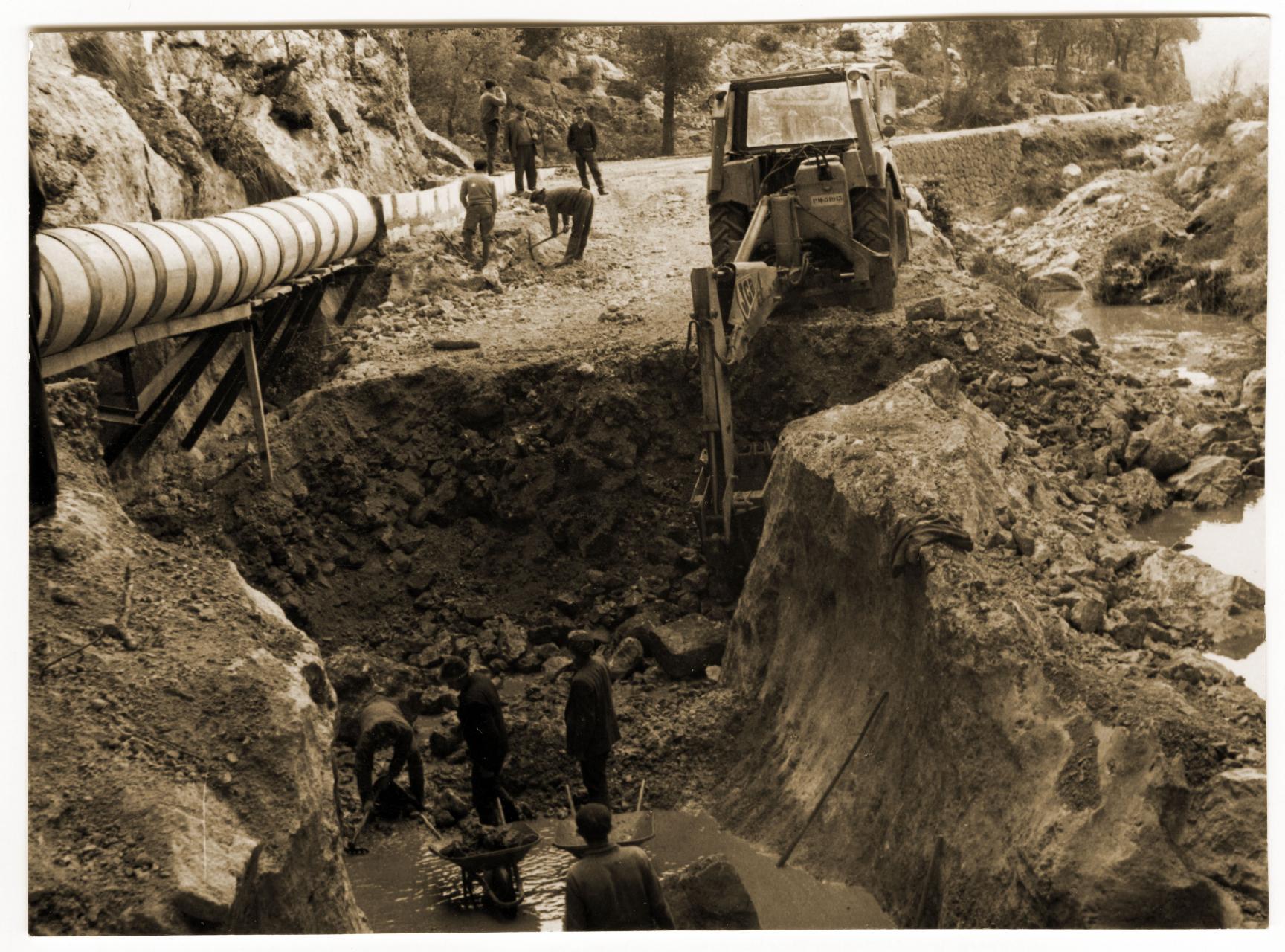This coming Friday, April 1, Palma town hall and the Emaya municipal services agency are to stage an event commemorating fifty years of the reservoirs in the Tramuntana Mountains. To mark the anniversary, there is a book which explains the background to one of the most ambitious public works ever carried out in Mallorca, a project that transformed the Gorg Blau, a torrent stream that once upon a time was a must-visit for the island's early tourists.
The Gorg Blau in l'Estret was fed by water from the Font de la Roca. Between the Almallutx valley and Turrixant de Baix, tourists of the late nineteenth century onwards were taken there. In addition, the torrent was once used for a small hydroelectric plant, which ceased operations in 1939, by when there was already talk of the possibility of creating reservoirs in the mountains.
The electricity company, GESA, drafted plans for five reservoirs to produce electricity. In the end, only two were approved - Cúber and Gorg Blau - and their purpose was to change: they would be for the supply of water. After the project for these two reservoirs was presented, there was a period for submissions. At the end of 1954, these submissions - mainly objections - led to the suspension of the project. The impact on the Gorg Blau as well as Biniaraix and the Torrent de Pareis would be too great. "People come to Mallorca to see the landscape," it was stated. Meanwhile, tourism on the island was "only in its infancy".
However, that infancy became the tourist boom, and it became increasingly necessary to boost the supply of water. As well as tourists and the hotels, restaurants and swimming pools, there was an increasing population, principally because of migration of workers from the mainland. Sources of water for Palma were deemed to be insufficient, while drought in the sixties affected the salinity of the water.
The Spanish government's ministry of public works therefore gave the go-ahead for reservoirs to supply water to Palma. Up to 1,000 workers were to be involved in the construction. They were from various parts of the island and also from Lorca in Murcia. A number of them lived in houses on the Puig Major.
The conditions were arduous and there were great technical difficulties, such as the propulsion and transfer pumps for carrying water from Gorg Blau to Cúber. The cost at the time was almost 300 million pesetas, 35 per cent of which was paid by the ministry and the rest by Palma town hall. On April 17, 1972, Gonzalo Fernández de la Mora, the minister for public works, officially inaugurated the reservoirs.
Nowadays, some twenty per cent of Palma's water comes from the reservoirs. The bulk of the supply - around 73% - is in fact from groundwater and springs. The rest is supplied by the Balearic government's Abaqua agency, and this can include desalinated water. Emaya manages the operation, and supplies for the other municipalities on the bay of Palma are complemented by water from the reservoirs.


No comments
To be able to write a comment, you have to be registered and logged in
Currently there are no comments.